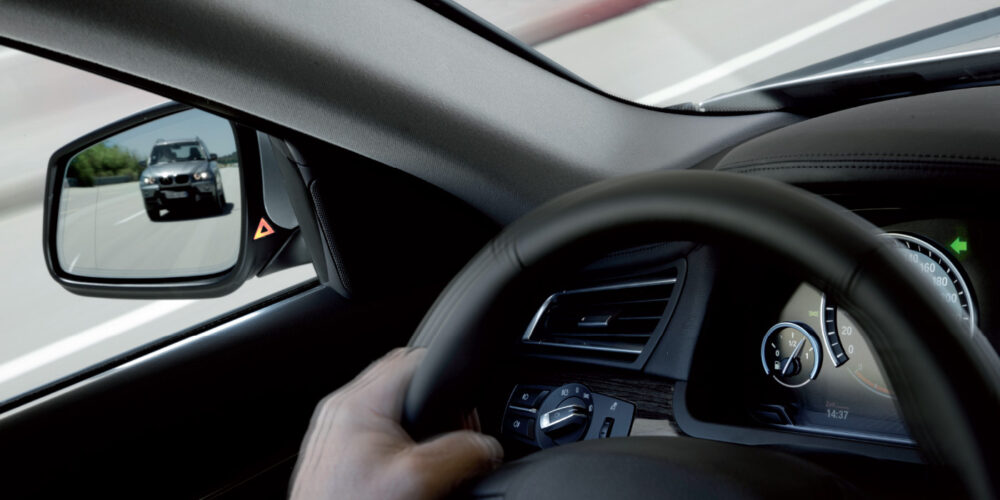The average age of a driver in the US is 47 years old. If a driver started at 16, they have seen more than three decades of automotive technology changes. In 2008, ABS became a standard feature on most vehicles. By 2012, stability control, or rollover mitigation, had become standard for vehicles. Since 2006, advanced driver assistance systems (ADAS) have evolved from active cruise control to autonomous driving controls. The one constant has been customers complaining that the vehicle did something unexpected.
ABS, ESC and ADAS have changed the driving experience. When an average driver started driving, they had brake and chassis systems that alerted drivers to potential safety risks with mechanical cues like locking brakes, oversteer and understeer. The first significant change came with ABS. If you were working 25 years ago, you would expect to get customers complaining about sinking and pulsating brake pedals on the first snow of the year.
Many of these complaints are routine operations for the system. But, there is always the possibility of a false activation of these systems when a correction is not required. Diagnosing false activation of a safety system like ABS or automatic emergency braking (AEB) can be difficult due to the intermittent nature of the complaint. Many false activation scenarios focused on a single malfunctioning sensor, but with ADAS, the cause of false activation of a feature could be more mechanically holistic.
One of the first false activation complaints was ABS activation at speeds between 3-15 mph. This problem usually starts with the wheel speed sensors. A weak signal from a sensor is interpreted as a locked wheel, which triggers the computer to activate the ABS and release brake pressure to unlock the wheel. The driver might experience a longer-than-normal stop. The cure for false activation is to clean the tip of the wheel speed sensor, inspect the tone ring and adjust the air gap. This typically fixes the problem.
New magneto-resistive or “active” wheel speed sensors are not prone to issues of metal accumulation on the tip of the sensor. However, debris can build up on the magnets embedded in the reluctor ring in the outer seal of some sensors. This can take a long time to accumulate.
False activations are still a problem with active sensors, but more advanced modules can determine if a wheel is locked or has a wheel speed sensor problem. Instead of activating the ABS module and causing long stops, the system will deactivate and the ABS warning light will turn on.
ESC FALSE-ACTIVATIONS
The next false-activation scenario involves the ESC system. The source of the problem can be more than one sensor and can even be traced to alignment angles. The customer may overlook an issue until there is a mechanical problem with the brakes. In these cases, you may notice that one wheel is covered in brake dust. Some customers may complain that the ESC activates on slower corners or on highway off-ramps.
The most important sensor is the steering angle sensor (SAS), which measures the steering angle, steering wheel speed and torque the driver applies. This input tells the ESC system what the driver wants to do. The other sensors tell the ESC system what the vehicle is doing.
Let’s examine what happens during an understeer condition where the wheel turns, but the vehicle travels in a straight line. The driver will continue increasing the steering angle, but the lack of traction keeps the vehicle straight.
The ESC computer sees the understeer event via the sensors long before the driver realizes it. The ESC computer also sees that the driver’s steering angle is greater than the actual path measured by the yaw and lateral accelerometers.
The ESC system intervenes to make the vehicle turn using the brakes. The first action might be to close the throttle to transfer weight to the front so the tires can gain traction. The next action might be to increase braking force on the inside front and/or outside rear tire to get the vehicle to rotate. All this time, the sensors are monitoring what the driver is doing and the effectiveness of the correction. This happens in nanoseconds.
Let’s say a steering position sensor gives a false reading of an extra 50° when the car travels in a straight line. The ESC might perform a correction by activating the brakes to get the steering angle to match what the other sensors are seeing.
The other possibility is the extra 50° on an off-ramp may trigger the ESC system because it is interpreting the signals as an understeer condition.
Another false activation scenario can be caused by an excessive thrust angle. The thrust angle is an imaginary line drawn perpendicular to the rear axle’s centerline. It compares the direction the rear axle is aimed at with the vehicle’s centerline. Excessive thrust angle can cause the vehicle to go down the road at an angle with the steering wheel turned to one side.
The ESC system can experience the effects of an excessive thrust angle but can’t see the thrust angle. The yaw sensor shows that the vehicle is not traveling in a straight line, and the accelerometers and the steering angle indicate that the driver might be trying to correct it. The accelerometers tell the system that nothing is happening.
The ESC system might read this as the rear end starting to step out, which could be interpreted as an oversteer. The ESC system might try to correct the condition by pulsing the inside rear brake.
ADAS False Activations
ABS and ESC systems are essentially blind. They can sense what is occurring with vehicle dynamics and interpret the driver’s inputs. ADAS systems can sense what is happening outside the vehicle, like lane markings and other objects around the vehicle. ADAS does this using cameras, lasers and radar. The three systems control the vehicle’s dynamics and calculate an effective correction for the given circumstances and environment.
False activations can range from the automatic braking system stopping a vehicle when pulling out of a garage, to activating a lane-keeping system when the customer does not expect a warning or even steering correction. The secret to resolving these complaints is to treat them like a drivability problem with a condition, cause and correction.
The condition caused by an ADAS activation might be completely normal. The correction might be a warning or the activation of the brakes or steering. The key to understanding the condition is to know the criteria for activation of the system.
Many ADAS functions and corrections operate with a similar strategy as an emissions monitor. Like an oxygen sensor or misfire monitor, specific criteria must be met for the system to activate.
The other keys to know are the ADAS outputs during a dangerous situation. For some early systems, it was just an audio or visual alert. Some newer systems will shake the driver’s seat to alert the driver. More advanced systems can build up brake pressure and apply the brakes if a collision is imminent. Some systems will take further steps with the steering and even close the windows.
Many ADAS features do not become active until the vehicle reaches a specific speed. Depending on the OEM, pre-collision systems might start working between 5-10 mph. Lane departure might not begin to work above 25 mph. The takeaway from this is that a test drive is required after calibration is performed. Simply pulling out of the bay and parking the vehicle in a spot will not allow the vehicle to activate or run a self-diagnosis routine.
Knowing the speed range limits of these systems is critical if you try to perform a dynamic calibration on the road.
The logic behind most ADAS warnings or corrections is to examine the plausibility of the situation. For example, if the camera classifies an object as another vehicle, it will also use the radar sensor to confirm the vehicle’s path. If only one sensor detects an object, it might just decide the camera has made a false identification, and the plausibility that it is another vehicle is low.
Before you start a calibration procedure, you need to prepare the vehicle. Missing a step can cause the calibration process to be aborted or calibration to be off. In addition, something as simple as a weak battery can cause problems.
Inspecting the sensors and the vehicle for damage is the first step. Damage to the short- and long-range sensor behind the bumper covers or front air dam might not be seen during the initial inspection, but minor collisions can disturb the sensor and damage the mounting points. It could be from hitting a snowbank or parking block.
You might have to remove the bumper cover to inspect the sensor. The most common symptom is false or delayed activation of the system. If the front radar sensor is pointed up or down, it might detect another vehicle too late, and the correction might be more severe than expected. If the sensor is pointed too far left, it could think it is oncoming traffic in the vehicle’s path.
The other key inspection point is to look at the dash for any lights or messages. Never assume a check engine light is only for engine issues; many codes indicate a loss of communication with the different modules on the vehicle. ADAS systems communicate with many modules on the vehicle. Any problems with missing data could cause problems for ADAS calibrations. If the light is on, pull all the codes from the modules.
An alignment should also be performed to ensure the thrust line is within specifications. The steering angle sensor should also be reset as part of the alignment. Failing to reset the sensor might cause a steering pull and issues with the electric power steering system.















